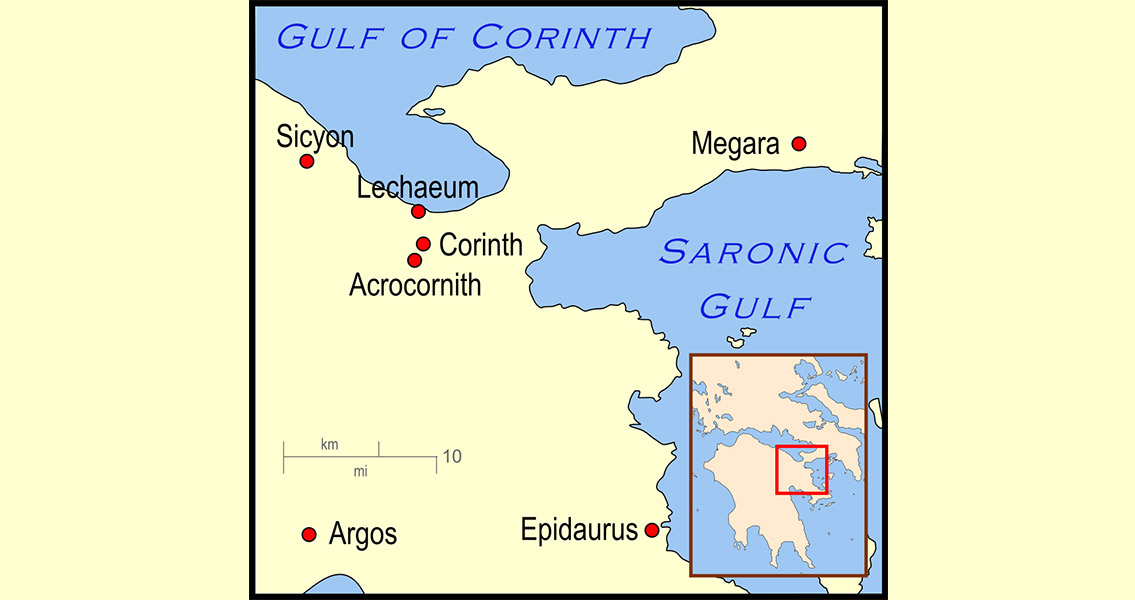<![CDATA[The Infrastructure of a major harbor has been discovered at the ancient city of Corinth. The findings are evidence that the port of Lechaion, now underwater, served as a thriving trading hub for more than a 1,000 years – between approximately 600 BCE until the late sixth century or early seventh century CE. A team of Danish and Greek archaeologists have been excavating and exploring the harbor for the past two years. Recent discoveries include the two piers (constructed with ashlar blocks), a smaller dock, two areas with wooden caissons (water tight chambers used as underwater foundations), a breakwater, and a stone-lined entrance canal which led to Lechaion’s little-explored interior harbor basins. Ranked among the most militarily and economically powerful ancient cities, Corinth was located on an isthmus connecting mainland Greece and the Peloponnese, Greece’s southern peninsula, and was the site of two ports; Lechaion on the Gulf of Corinth which served sea routes going west to Sicily, Italy, and Spain, and Kenchreai, on the Saronic Gulf, which served the sea routes to Asia Minor, Egypt, Syria and the Aegean region. The city had an extraordinary geographical advantage and controlled the isthmus, which enabled travel between southern and northern Greece and sea travel between the eastern and western Mediterranean. Merchants and their navigators would often prefer to anchor at one of the two ports and then transport their cargo overland to an awaiting vessel. Even lightweight ships could be towed from sea to sea across the isthmus (only 4 miles wide at its narrowest point) on a platform which ran along a grooved path. The caissons found in Lechaion are the first to be discovered in Greece with the wooden segments still preserved. Among the finds is a pier constructed with these caissons during the Byzantine era. The pier consists of six wooden caissons, and is 57 meters in length. The caissons were basically rectangular wood frames, with floors which allowed them to float. The caissons were likely built onshore and then floated out to a specific location and sunk using rubble or concrete. They were used to create a breakwater or pier, blocking the wind and protecting ships and cargo. Ancient sources portray Corinth as a prosperous trading center with a diverse population containing Romans, Greeks and Jews. It was also a city with religious diversity, as evidenced by the shrines and sanctuaries devoted to Egyptian and Greek divinities, along with a Jewish synagogue. Additionally, Lechaion was also home to a naval base. There are claims the trireme, one of the types of battleship from antiquity, were built by Ameinokles, a Corinthian shipbuilder, along the Lechaion shoreline. Athenians used the triremes advantageously in their critical victory over the Persian navy in 480 BCE at Salamis. No military harbor works have been located to date. All throughout the work, the archaeologists have been utilizing a variety of state-of-the-art mapping technologies to survey the sunken city. Geophysical survey work has been conducted underwater by geologists with the University of Patras using newly developed equipment like the 3D parametric sub-bottom profiler which creates 3D images of objects hidden in sand. Work this year will focus primarily on excavating the entrance canal to the inner harbor and the two huge underwater structures where several additional wooden caissons were discovered. ]]>
The Corinthian Port That Thrived for a 1,000 Years
